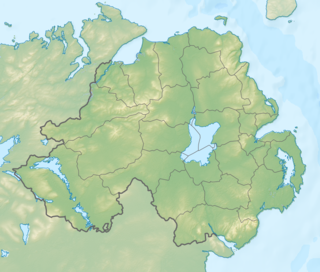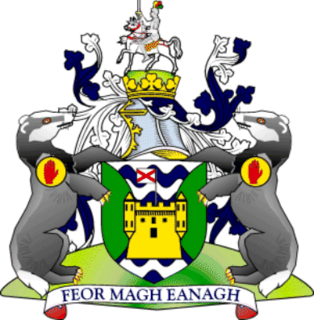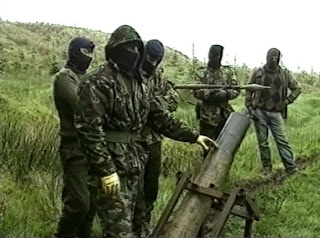This is a chronology of activities by the Provisional Irish Republican Army (IRA) from 1970 to 1979. For actions after this period see Chronology of Provisional Irish Republican Army actions.
The Troubles in Crossmaglen recounts incidents during, and the effects of, the Troubles in Crossmaglen, County Armagh, Northern Ireland.
The Troubles in Derrylin recounts incidents during, and the effects of, The Troubles in Derrylin, County Fermanagh, Northern Ireland.
The Troubles in Dungannon recounts incidents during, and the effects of, The Troubles in Dungannon, County Tyrone, Northern Ireland.
The Troubles in Killeen recounts incidents during, and the effects of, The Troubles in and around the village of Killeen, County Armagh, Northern Ireland.
The Troubles in Newry recounts fatalities during The Troubles in Newry, County Armagh/County Down, Northern Ireland.
The Troubles in Newtownbutler recounts incidents during, and the effects of, The Troubles in Newtownbutler, County Fermanagh, Northern Ireland.
The Troubles in Lisnaskea recounts incidents during, and the effects of, The Troubles in Lisnaskea, County Fermanagh, Northern Ireland.
The Troubles in Forkhill recounts incidents during, and the effects of, the Troubles in Forkhill, County Armagh, Northern Ireland.
The Troubles in Cookstown recounts incidents during, and the effects of, The Troubles in Cookstown, County Tyrone, Northern Ireland.
The Troubles in Lisburn recounts incidents during, and the effects of, the Troubles in Lisburn, County Antrim, Northern Ireland.
The Troubles in Belcoo recounts incidents during, and the effects of, The Troubles in Belcoo, County Fermanagh, Northern Ireland.
The Troubles in Castlederg recounts incidents during, and the effects of the Troubles in Castlederg, County Tyrone, Northern Ireland.
The Troubles in Armagh recounts incidents during The Troubles in Armagh City, County Armagh, Northern Ireland; the violence was substantial enough for the city to be referred to by some as "Murder Mile". Over the span of 36 years, although mainly concentrated in the years from 1969 until 1994, the small city of around 15,000 people, including some outlying areas, seen 86 deaths in the Troubles, including those of a number of people from the city who lost their lives elsewhere in Troubles-related incidents.
The Troubles in Ardboe recounts incidents during and the effects of the Troubles in Ardboe, County Tyrone, Northern Ireland.
A total of seven people were killed in Troubles-related violence in or near the County Londonderry village of Moneymore, of whom six were Protestant and one Catholic. All were killed by the Irish Republican Army (IRA) except 71-year-old Protestant Samuel Miller, who was beaten to death by the Ulster Defence Association after witnessing a robbery.
The Troubles in Strabane lists incidents during the Troubles in Strabane, County Tyrone, Northern Ireland.
The Troubles in Lurgan recounts incidents during the Troubles in Lurgan, County Armagh, Northern Ireland resulting in two or more fatalities.
This is a chronology of activities by the Provisional Irish Republican Army (IRA) from 1980 to 1989. For actions before and after this period see Chronology of Provisional Irish Republican Army actions.

On 11 August 1970, two Royal Ulster Constabulary (RUC) officers were killed by a booby-trap bomb planted under a car by the Provisional Irish Republican Army (IRA) near Crossmaglen, in County Armagh, Northern Ireland. They were the first RUC officers to be killed by republicans during the Troubles and the first security forces to be killed in South Armagh, an IRA stronghold for much of the conflict.







